Saudi water projects momentum holds steady
12 September 2023
 This package on Saudi Arabia’s water sector also includes:
This package on Saudi Arabia’s water sector also includes:
> Riyadh holds water pipeline bid clarifications
> Red Sea awards Amaala utility package
> Five banks agree $545m Rabigh 4 financing
> Saudi Arabia extends desalination bid deadline
> Albawani joins Jafurah water developer team
> Saudi Arabia evaluates Al-Haer wastewater bids

The Saudi water market remains the region’s largest, with $30bn-worth of projects in varying planning and procurement stages.
The sector is expected to expand further with multibillion-dollar capital expenditures allocated by the potable water and wastewater collection and treatment firm, the National Water Company (NWC), and Saline Water Conversion Corporation (SWCC), the world’s largest producer of desalinated water.
This offers great opportunities for water asset developers and engineering, procurement and construction (EPC) contractors aiming to capture a share of the kingdom’s burgeoning water projects market.
SWCC, NWC and the principal buyer of water, Saudi Water Partnership Company (SWPC), awarded over $32bn of water infrastructure and utility projects between 2013 and 2022, according to MEED Projects data.
Driving investment within the sector is the need to improve water security, a key component of Saudi Vision 2030, along with rising demand due to population and economic expansion.
Reducing the carbon footprint of the kingdom's existing seawater desalination fleet, dominated by plants running on older technologies, is also contributing to the urgency to build more energy-efficient water infrastructure.
This is matched by moves to make potable and wastewater water transmission and distribution more efficient and to minimise leakage and non-revenue water. The kingdom also needs to expand its overall water storage capacity to improve its emergency response.
Simultaneously, like most of its groundwater-scarce neighbours, there is growing pressure to adopt treated sewage effluent for agricultural and industrial applications to reduce demand for seawater desalination and comply with the kingdom’s circular carbon economy approach.
“It is an interesting time for the Saudi water sector,” says a Dubai-based water expert.
“There are many projects in the tendering phase, but there is also some degree of uncertainty in terms of how the roles of the key stakeholders could shift [in the future].”
This stems from the years-long restructuring of the sector and last year's cabinet resolution approving the transfer of water production, transportation and storage assets owned directly or indirectly by SWCC to Water Solutions Company, a wholly-owned subsidiary of the Saudi sovereign vehicle, the Public Investment Fund (PIF).
There is widespread expectation that SWCC will focus on research and development following the transfer of its assets to the PIF subsidiary, although this has not been formally announced.
Diversified clients
The lengthy restructuring of the kingdom’s water sector and rapid advance of so-called gigaprojects have diversified the profile of clients in the kingdom.
Neom and its subsidiary Enowa, SWCC transmission arm Water Transmission & Technologies Company (WTTCo) and other gigaproject developers, such as the royal commissions for Riyadh City and Al-Ula, have joined the mainstream water utility companies and municipalities in tendering new water infrastructure contracts over the past year.
In terms of projects in the pre-execution phase, SWPC is the top client, with a pipeline of projects worth at least $7bn.
SWPC is mandated to procure all water infrastructure projects in the kingdom on a public-private partnership (PPP) basis, including water desalination, wastewater treatment, transmission and reservoirs.
Its latest Seven-Year Planning Statement covering 2022-28 stipulates the procurement of about 50 independent water infrastructure projects, including several in the bid stage.
SWPC’s future projects pipeline outperforms that of NWC and SWCC. Neom, Enowa, WTTCo and the Royal Commission for Al-Ula round out the top seven clients.
 Riyadh rides power projects surge
Riyadh rides power projects surge
Independent projects
Following consecutive awards of independent water producer (IWP) and independent sewage treatment plant (ISTP) contracts between 2019 and 2021, SWPC has recently paced out the award of new contracts.
It has only awarded one contract, directly negotiated with Saudi utility developer Acwa Power for the Shuaiba 3 seawater reverse osmosis (SWRO) project in 2022. This year, it awarded another contract for the Rabigh 4 IWP scheme, in addition to the contract to develop the kingdom’s first independent water transmission pipeline, which connects Rayis and Rabigh.
SWPC is evaluating the bids it received for the contract to develop the Al-Haer independent sewage treatment plant (ISTP), the first of the round-three projects under its ISTP programme, and expects to receive bids in October for the 300,000 cubic-metre-a-day (cm/d) Ras Mohaisen IWP.
The contract to develop the kingdom’s first independent strategic water reservoir (ISWR) project is expected to be awarded this year. The Juranah ISWR has a capacity to store 2.5 million cubic metres of water. The project is anticipated to significantly boost water security, particularly in Mecca and Medina, which host several million pilgrims annually.
EPC works
Despite moves to transfer its assets to the PIF subsidiary, SWCC cemented its reputation as the world’s largest producer of desalinated water when its fleet of 30 desalination plants reached a total combined capacity of 6.6 million cm/d in 2022.
The company is not resting on its past success, having issued successive tenders for SWRO plants using an EPC model over the past 12-18 months.
In July this year, it invited bids for the contract to build a 200,000 cm/d SWRO facility in Ras al-Khair.
This came three months after it received two bids for the contract to build the second phase of the Shuaibah water desalination plant, which has an even higher capacity of 545,000 cm/d.
Around the same time in March, SWCC tendered a contract to construct a greenfield SWRO plant in Yanbu with a design capacity of 500,000 cm/d.
SWPC last awarded a major SWRO contract in mid-2021. The giant 1 million cm/d Jubail SWRO plant is being built by a team of Metito and local firm Saudi Services for Electromechanic Works.
Before this, in late 2019, it awarded a contract to construct a 400,000 cm/d SWRO plant in Shuqaiq to a team of Spain’s Acciona and Al-Rashid Trading & Contracting Company.
SWCC, though WTTCo, has also tendered multiple water transmission projects, including pipelines around Riyadh and connecting Riyadh and Ras al-Khair, Shuqaiq and Jizan and Al-Duwadimi and Atif.
In its 2022 annual report, SWCC stated that it had achieved exceptional results in supporting the Saudi Green Initiative, reducing carbon emissions, increasing operational efficiency to above 99 per cent and saving SR1.6bn ($427m) in operational costs.
The company also “increased local content in its operational efficiency by 61 per cent and demonstrated noteworthy patent accomplishments, innovations, studies and scientific publications”.
Innovation
New tourism-related developments, the expansion of industrial complexes and the need to limit carbon emissions are driving capacity-building and innovation.
The Red Sea development is completing the kingdom’s first private sector multi-utility project, which includes developing and operating a solar photovoltaic power plant, battery energy storage system, water desalination and treatment and waste recycling plants in one contract.
In addition to tendering major water transmission and distribution networks, Neom is also finalising the design for a zero-liquid discharge SWRO plant catering to the development. Enowa, Japan’s Itochu and France’s Veolia are expected to tender the project's EPC package soon.
The proposed state-of-the-art desalination plant will be powered 100 per cent by renewable energy and use advanced membrane technology to produce separate brine streams.
This will enable the production of brine-derived products, which will be developed and monetised downstream. The bigger plan includes establishing a brine processing complex in Oxagon, which could require an investment of between $15bn and $20bn.
Exclusive from Meed
-
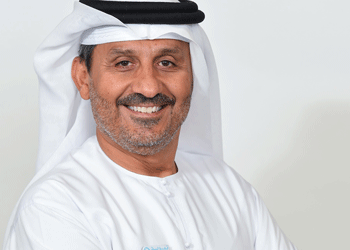 Tabreed finishes the year on a high
Tabreed finishes the year on a high17 December 2025
-
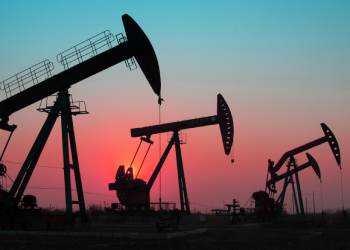 Kuwait Oil Company seeks higher project budgets
Kuwait Oil Company seeks higher project budgets17 December 2025
-
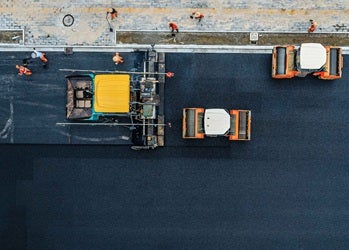 Morocco awards $185m Guercif-Nador road contracts
Morocco awards $185m Guercif-Nador road contracts17 December 2025
-
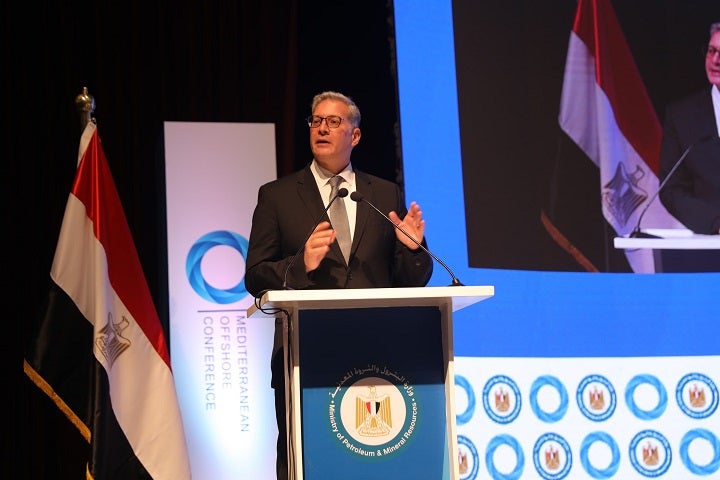 Egypt plans $5.7bn oil and gas exploration campaign
Egypt plans $5.7bn oil and gas exploration campaign17 December 2025
-
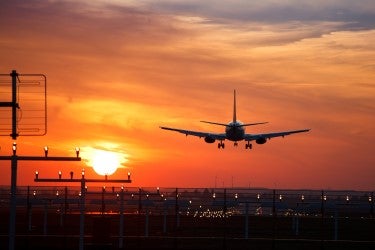 Saudi Arabia to award Abha airport expansion by March
Saudi Arabia to award Abha airport expansion by March17 December 2025
All of this is only 1% of what MEED.com has to offer
Subscribe now and unlock all the 153,671 articles on MEED.com
- All the latest news, data, and market intelligence across MENA at your fingerprints
- First-hand updates and inside information on projects, clients and competitors that matter to you
- 20 years' archive of information, data, and news for you to access at your convenience
- Strategize to succeed and minimise risks with timely analysis of current and future market trends

Related Articles
-
 Tabreed finishes the year on a high
Tabreed finishes the year on a high17 December 2025

Tabreed is consolidating its position as a leading regional district cooling provider following a series of major transactions and new concessions that will reshape its portfolio in the UAE and beyond.
In 2025, the company completed the AED3.87bn ($1bn) acquisition of PAL Cooling Holding (PCH) in consortium with CVC DIF, and finalised the long-term district cooling concession for Palm Jebel Ali in Dubai as part of a joint venture (JV) with Dubai Holding Investments.
The PCH deal will eventually add about 600,000 refrigeration tons (RT) of capacity across eight long-term concessions in Abu Dhabi, raising Tabreed’s total connected capacity by 13% to 1.55 million RT. The AED1.5bn Palm Jebel Ali JV will ultimately deliver a further 250,000RT.
Speaking to MEED, Tabreed CEO Khalid Al-Marzooqi outlined how the company is integrating the newly acquired brownfield assets, developing greenfield projects and advancing a new generation of sustainable cooling solutions, including geothermal energy for data centres.
Tabreed’s recent milestones span both greenfield and brownfield investments, each requiring a different approach, says Al-Marzooqi.
Greenfield projects, such as Palm Jebel Ali, remain Tabreed’s preferred route for new capacity, he adds. “The beauty of a greenfield is that you can optimise it the way you want. You build it as you want.”
For new plants, Tabreed designs the civil structure to accommodate long-term capacity, while phasing in mechanical equipment in line with demand. By contrast, the acquisition of PCH is a large-scale brownfield integration, bringing in a portfolio of existing and future plants and networks, mainly on Abu Dhabi’s main island and Reem Island.
The immediate focus is on integration and driving network synergies. “That’s the beauty of district cooling. If you achieve the synergies, the benefits literally double up and triple up as well,” Al-Marzooqi says.
By interconnecting plants, Tabreed can avoid building for peak capacity at each individual site and instead leverage shared spare capacity across the network.
Growth strategy
Acquiring a competitor in Abu Dhabi is part of a strategy to sustain growth in a sector where many contracts follow build-own-operate-transfer or similarly time-bound models.
Organic growth via new concessions and inorganic growth via acquisitions are both seen as key to maintaining and expanding the asset base.
Tabreed’s portfolio remains weighted towards the UAE, with the home market accounting for the bulk of its business.
Beyond the UAE, Tabreed has built a regional presence, with a partially owned business in Saudi Arabia, where it sees significant growth potential as district cooling is integrated into gigaprojects and major urban developments; a wholly owned operation in Bahrain; and a majority stake in Tabreed Oman, a market that Al-Marzooqi says is expanding well.
Despite the energy and lifecycle cost benefits of district cooling, Al-Marzooqi says tariff subsidies on conventional, building-level cooling are a barrier to adoption in parts of the UAE.
“The killer for us is subsidy,” he says, explaining that artificially low tariffs for individual customers make it harder for district cooling to compete on price in Abu Dhabi compared to Dubai.
He says that policy support and regulatory mandates are needed, particularly as existing buildings approach the end of life for their standalone cooling systems. At that point, compulsory connection to district cooling could lock in significant energy savings and emissions reductions at city scale.
Raising Abu Dhabi’s district cooling penetration from about 15% towards Dubai’s estimated 30% remains a key concern and strategic objective.
In Abu Dhabi, Tabreed has developed … the Middle East’s first geothermal-powered district cooling plant
Geothermal breakthrough
Alongside portfolio growth, Tabreed is investing in new technologies to decarbonise cooling, with a focus on large campuses, major developments and, increasingly, data centres.
At Masdar City in Abu Dhabi, Tabreed has developed what Al-Marzooqi describes as the Middle East’s first geothermal-powered district cooling plant.
“We have started off by building the region’s first geothermal plant, to prove the concept of using geothermal energy to provide cooling,” he says.
The pilot plant is already achieving efficiency levels in the range of 0.5-0.6 kilowatts per ton (kW/ton) of cooling, better than Tabreed’s typical district cooling benchmark of about 0.85kW/ton. Conventional, standalone cooling systems generally consume about twice as much energy per ton.
“This is proof that if you really want to pursue a sustainable cooling solution for data centres in this area, this is the one,” he says.
Data centres are emerging as a priority growth segment for Tabreed. The facilities have high, continuous cooling loads and increasingly stringent decarbonisation requirements, making them a natural fit with both district cooling and geothermal systems.
Al-Marzooqi says geothermal cooling is a “godsend solution” for data centres, combining 24/7 availability with the potential for near-zero operational emissions.
For hyperscale and colocation data centre operators facing mounting pressure to reduce their carbon footprint, geothermal district cooling could offer a differentiated, long-term solution in the Gulf region, particularly where grid power is still largely fossil-fuel based.
Tabreed’s technology agenda is not limited to low-carbon generation. The utility is in the second phase of connecting its plants to a centralised digital control centre, enabling remote operation and optimisation.
The long-term goal is for the majority of plants to be unmanned, with operations centrally monitored and controlled. This integrated view of the network will enable the application of artificial intelligence and advanced analytics to fine-tune performance, optimise energy use and predict maintenance requirements.
https://image.digitalinsightresearch.in/uploads/NewsArticle/15266676/main.gif -
 Kuwait Oil Company seeks higher project budgets
Kuwait Oil Company seeks higher project budgets17 December 2025

Contractors in Kuwait expect to have answers by the end of the year on whether budgets for several key upstream projects in the oil and gas sector will be increased, according to industry sources.
State-owned upstream operator Kuwait Oil Company (KOC) is seeking approvals for at least three upstream projects, for which bids came in significantly over budget.
The first project, with a low bid of $2.47bn, involves the development of two facilities: Separation Gathering Centre 1 (SGC-1) and Water Injection Plant 1 (WIP-1).
The second project, with a low bid of $2.48bn, focuses on developing SGC‑3 and WIP‑3.
The third project, which involves developing effluent water disposal plants for injector wells, had a low bid of $1.3bn.
For KOC to increase the budgets for all three projects, approvals will be required from Kuwait Petroleum Corporation (KPC) and the country’s Ministry of Finance.
Already cancelled
One Kuwaiti oil project tender that received bids significantly above budget has already been cancelled.
On 7 October, MEED reported that the tender for the SGC-2 oil project – focused on the installation of a separation gathering centre – was cancelled by Kuwait’s Central Agency for Public Tenders.
Earlier this year, UK-based Petrofac had submitted a bid more than double the project’s proposed budget.
Petrofac’s bid was KD422.45m ($1.37bn), while the provisional budget stood at KD207m ($670.2m).
This contract is expected to be retendered, but there is significant uncertainty about when a new invitation to bid will be issued and how the scope may change.
Earlier in December, MEED reported that KOC was discussing whether to retender the contract using a different contract model.
Initially, the project was tendered using the engineering, procurement and construction (EPC) contract model.
Discussions are ongoing on whether it will be relaunched under a build-own-operate (BOO) contract model.
https://image.digitalinsightresearch.in/uploads/NewsArticle/15263996/main.png -
 Morocco awards $185m Guercif-Nador road contracts
Morocco awards $185m Guercif-Nador road contracts17 December 2025

Morocco’s Ministry of Equipment, Transport, Logistics & Water has awarded three contracts totalling MD1.7bn ($185m) for building three lots of the 40-kilometre (km) section two of the Guercif to Nador highway between Saka and Driouch.
The contracts were awarded to local firms.
Casablanca-based Groupe Mojazine won a $64m contract for lot one, which covers the construction of 14km of highway.
The other two contracts covering construction works on lots two and three were awarded to the local firm Bioui Travaux.
The contract value for lot two is over $56m and covers the 12km highway section. The lot three contract is worth about $69m and covers 40km of highway construction.
The 104km Guercif to Nador highway is being implemented in three sections. Prequalification for section two from Saka to Driouch was completed in June, as MEED reported.
The estimated $700m project, partly funded by the African Development Bank, is part of the kingdom’s plans to upgrade its public infrastructure in preparation for co-hosting the 2030 Fifa World Cup alongside Portugal and Spain. The programme includes the expansion of over 1,000km of highways.
In May, Societe Nationale des Autoroutes du Maroc awarded MD5bn ($540m) of contracts for nine packages covering construction works on the Rabat-Casablanca continental expressway.
Morocco’s construction and infrastructure sector is gearing up for billions of dollars in projects as the North African nation continues to award contracts for building infrastructure for the 2030 Fifa World Cup.
Morocco has made a strong head start in ensuring that the necessary infrastructure is ready for the tournament.
According to data from regional project tracker MEED Projects, 2024 was the best year in the past decade for construction and transport contract awards in Morocco, with contracts worth over $3.6bn signed with local construction firms and international companies from South Korea, China, France and Spain.
https://image.digitalinsightresearch.in/uploads/NewsArticle/15266606/main.jpg -
 Egypt plans $5.7bn oil and gas exploration campaign
Egypt plans $5.7bn oil and gas exploration campaign17 December 2025
Egypt plans to drill 480 exploratory wells, with total investment estimated at $5.7bn, over the next five years, according to Karim Badawi, the country’s minister of petroleum and mineral resources.
Speaking at a conference in Cairo, Badawi said that Egypt’s oil and gas sector was stabilising after a period of decline.
He said that his ministry was targeting an increase in gas production for the first time in four years.
The government is also aiming for self-sufficiency in crude oil production within five years, he said.
Egypt is aiming to boost crude production by introducing investment incentive packages and utilising new production technologies.
Badawi highlighted specific capital commitments from international partners to develop oil and gas resources over the next five years. These included Italian company Eni’s commitment to invest $8bn, as well as London-headquartered BP’s plan to invest $5bn.
He also highlighted Arcius Energy’s plan to invest $3.7bn. Arcius Energy is a joint venture of BP and Adnoc’s XRG.
The $5.7bn exploration programme includes 101 wells scheduled for drilling in 2026.
Badawi said that seismic survey operations would expand to cover 100,000 square kilometres in the Western Desert and 95,000 square kilometres in the Eastern Mediterranean using Ocean Bottom Node (OBN) technology.
Renewable energy strategy
Addressing the national energy strategy, Badawi said the government aims to increase the share of renewable energy in electricity generation to 42% by 2030.
He said this would enable natural gas to be redirected to value-added industries, such as petrochemicals and fertilisers, to boost exports.
On the transition to green energy, the minister cited plans to reduce reliance on traditional fuels and open investment in sustainable aviation fuel (SAF), green ammonia and bioethanol.
Efficiency measures in the sector have already reduced carbon emissions by 1.4 million tonnes, he said.
Recently, Egypt announced a $200m deal with Qatar to produce aviation fuel from used cooking oil.
https://image.digitalinsightresearch.in/uploads/NewsArticle/15264077/main0508.jpg -
 Saudi Arabia to award Abha airport expansion by March
Saudi Arabia to award Abha airport expansion by March17 December 2025
Register for MEED’s 14-day trial access
Saudi Arabia’s Civil Aviation Holding Company (Matarat) and the National Centre for Privatisation & PPP (NCP) are expected to award the contract to develop and operate a new passenger terminal building and related facilities at Abha International airport by March next year.
The announcement was made by Abdulaziz Al-Duailej, president of the General Authority of Civil Aviation (Gaca), at the Supply Chain and Logistics Conference 2025 in Riyadh on Tuesday.
The companies prequalified to bid for the contract are:
- GMR Airports (India)
- Mada TAV: Mada International Holding (local) / TAV Airports Holding
- Touwalk Alliance: Skilled Engineers Contracting (local) / Limak Insaat (Turkiye) / Incheon International Airport Corporation (South Korea) / Dar Al-Handasah Consultants (Shair & Partners, Lebanon) / Obermeyer Middle East (Germany/Abu Dhabi)
- VI Asyad DAA: Vision International Investment Company (local) / Asyad Holding (local) / DAA International (Ireland)
Located in Asir Province, the first phase of the Abha International airport public-private partnership (PPP) project will expand the terminal area from 10,500 square metres (sq m) to 65,000 sq m.
In early March this year, the clients held one-on-one meetings with prospective bidders in Riyadh, as reported by MEED.
The contract scope includes a new rapid-exit taxiway on the existing runway, a new apron to serve the new terminal, access roads to the new terminal building and a new car park area.
Additionally, the scope includes support facilities, such as an electrical substation expansion and a new sewage treatment plant.
Construction is scheduled for completion in 2028.
The project will be developed under a build-transfer-operate (BTO) model and involves designing, financing, constructing and operating a greenfield terminal.
This will be the kingdom’s third airport PPP project, following the Hajj terminal at Jeddah’s King Abdulaziz International airport and the $1.2bn Prince Mohammed Bin Abdulaziz International airport in Medina.
Higher capacity
According to Matarat, Abha airport’s capacity will increase to accommodate over 13 million passengers annually—a 10-fold rise from its current 1.5 million capacity.
Once completed, the airport will handle more than 90,000 flights a year, up from 30,000.
The new terminal is also expected to feature 20 gates and 41 check-in counters, including seven new self-service check-in kiosks.
The BTO contract duration is 30 years.
The existing terminal, which served 4.4 million passengers in 2019, will be closed once the new terminal becomes operational.
Matarat’s transaction advisory team for the project comprises UK-headquartered Deloitte as financial adviser, ALG as technical adviser and London-based Ashurst as legal adviser.
https://image.digitalinsightresearch.in/uploads/NewsArticle/15264715/main.jpg

